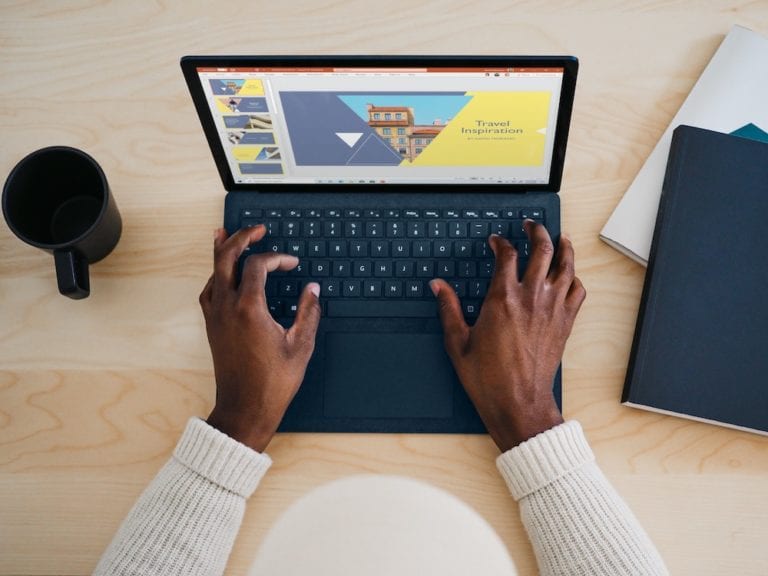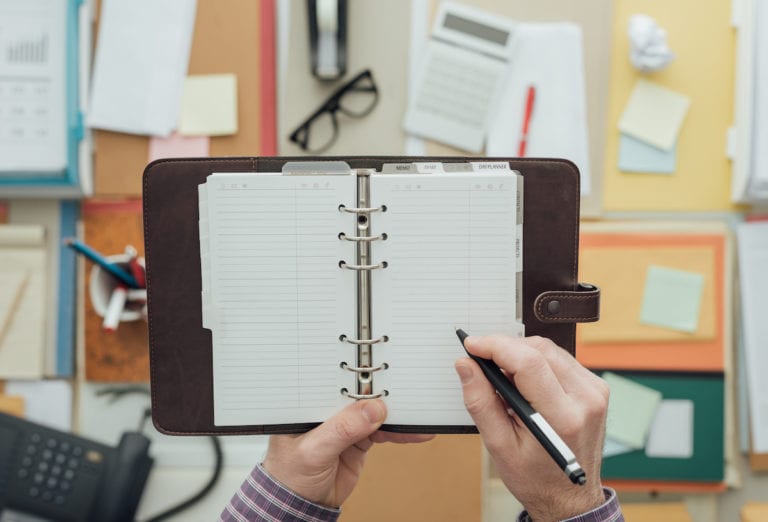
Working from home can be awesome for some people, but it can also prove to be…challenging for others.
Before the insanity of 2020 struck, some modern professionals thrived from the luxury of occasionally working from home. But now that all of us are stuck at home, which environment is actually beneficial for our productivity? Our home office or our actual physical office?
While being in the office, your coworkers tend to be the biggest threat to your productivity. However, at home, I’ve often found that it’s easy to become your own worst enemy. When you’re not surrounded by the backdrop of your colleagues and your boss, the drive to accomplish everything can dwindle. (Especially when you’re working in your pajamas and have a severe bedhead.)
That just means it’s up to you to motivate yourself and complete your tasks–like you would in your physical office.
As such, here are some tips from me and my team to help you keep yourself accountable and productive.
Get an early start and commit to doing more
Not a morning person? I feel you. In fact, I’m pretty much dead before my first cup of coffee or tea. But I’ve definitely benefited from the simple act of waking up to kick off the workday.
Start off your day right by productively diving into your to-do list the first thing in the morning. Even the simple act of getting a project started can be the key factor in making effective progress on tasks or campaigns.
While you’re riding high on that productivity train, attempt to also overestimate the number of things you’ll get done in a day. Because at the end of the day, even if you come up short of your initial goal, you still would’ve gotten a solid list of tasks done.
And that’s a special kind of gratification that no other acclaim can fill.

Plan out your daily tasks and schedule
Working from home, while similar in the schedule of a typical office job, often requires strong self-discipline and accountability. Now, that doesn’t mean that your entire day centers only around work––because it’s especially important to take breaks for a much-needed refresher in order to retain some semblance of your sanity––it just means that any non-work-related activities need to be scheduled for your own knowledge.
Therefore, when you’re creating your schedule, be sure to pencil in other commitments (i.e. kids, marriage, sports, volunteering, etc.) in order to motivate yourself to get work done before or after these extraneous responsibilities.
Once you’ve set a clear schedule, make it accessible and visible to your other colleagues through a shared calendar (it can be a simple iCal or Google Calendar). By maintaining a schedule, you and your coworkers are aware of when to schedule a meeting.
I find this extremely helpful to one’s mental health because it’s hard to know when to stop working and when to start. When you employ a schedule, it’s easier to keep track of what you need to get done and when it needs to be completed.

Utilize the resources at your disposal
Technology is a wonderful thing at times, isn’t it? Especially when one lives in the midst of a global outbreak.
Since most of us are stuck at home, why not spend this time setting up an independent work area for yourself? Invest in a Spotify Premium account (maybe listen to some hype music to psych yourself up), use tools like Trello or Slack, jump on video calls with your fellow WFH colleagues, and etcetera. This is a great way to stay-in-sync throughout the day whilst simultaneously keeping personal contact with others.
Embrace shared cloud technology like Google Docs or marketing automation systems to help you get your job done.
Attend as many virtual marketing events as possible
If you’re like me, then you’re a big fan of self-improvement and skills development. If you’re not really into, I’d suggest attending at least one marketing summit to hone your marketing skills and knowledge.
Leverage this time to attend virtual marketing events to understand more about what your target audience is going through and how their behaviors, attitudes, and psychology is changing due to current events.
Harnessing all the information available is a surefire way to keep up with current trends, metrics, and analytics so that you can tailor your messaging to fit contextually. Check out some marketing events like Content Marketing World or Adobe Max.

Most importantly…take breaks!
While most of us generally understand the necessity of taking breaks, I cannot help but emphasize it more. Taking breaks can be extremely beneficial in boosting your productivity levels, but it is also crucial to your mental health, as it can prevent fatigue or burnout.
But don’t just take my word for it. According to a research report by Stanford University, taking breaks and going on a walk can bring exceeding positive results for productivity and creativity.
Some other practical ways you can take breaks is by implementing the Pomodoro Technique. It enforces productivity by driving 25 mins of intense productivity then staggering it with 5 minute breaks in-between. As more intervals of tasks increase, so does the amount of break time.
You could also practice the ‘Pulse and Pause’ technique. The technique focuses on taking longer breaks after 90 minutes of productivity. During this break, you could have a healthy snack or watch some funny Youtube videos.
A personal favorite of mine is to schedule a workout. Studies have shown that physical activity like running, yoga, Zumba, boxing, and etcetera is immensely benign for mental and physical health as well as brain function.

The verdict
While working from home certainly has its perks––zero long commutes and flexibility in schedule––it can lead to some fatigue as well, as the novelty of remote working dies down. However, this unprecedented time shall pass and you’ll be back in the office before you know it.






